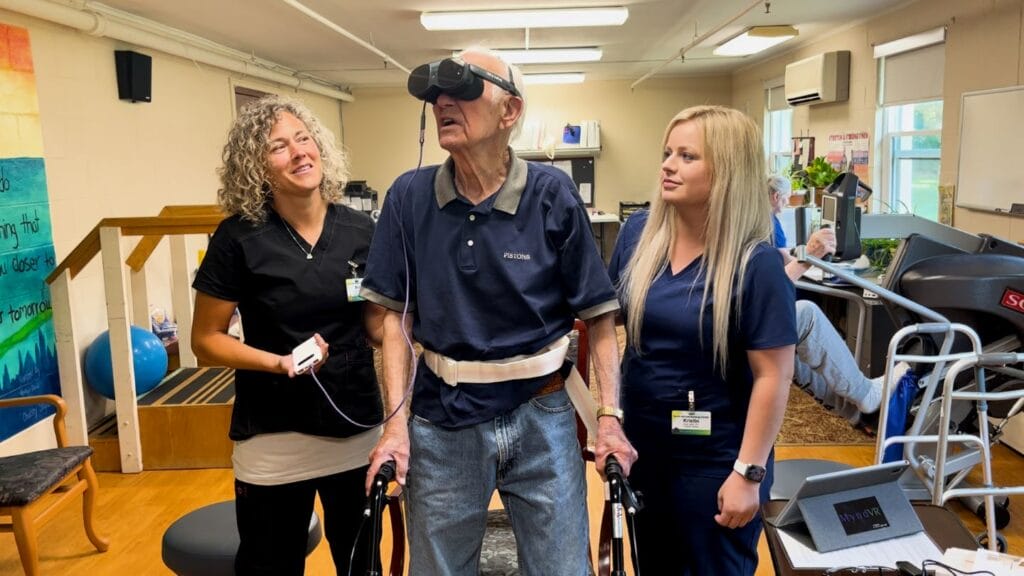
Over the past few years, it’s been established that older adults living with dementia can benefit from the use of virtual reality programs, either for therapy or entertainment purposes.
Now, a new study shows that VR tech also strengthens the relationship between older adults and their professional caregivers.
“They [older adults] might remember they did a trip along Route 66 years and years ago,” Chris Brickler, CEO of Mynd Immersive, formerly MyndVR, explained Wednesday. “Now picture a VR series where a caregiver can ‘drive’ the senior along that road. They can unlock a flood of old memories. It makes for happy seniors and a happy caregiver.”
The ability for professional caregivers to not only embrace new technology, but to feel as if they are making a difference in the lives of residents, could be valuable for senior living communities, where an ongoing concern exists about having enough staff members to meet residents’ needs.
An overwhelming majority, 95%, of senior living caregivers said they believed that using the VR was “moderately to extremely beneficial” for building a relationship with residents, according to the study results, which included 245 older adults and 39 caregivers across 16 different senior living communities.
Although caregivers don’t always put on the glasses or a headset, those who use Mynd Immersive’s technology are given a tablet with which they can control a VR experience for residents or “just go along for the ride,” Brickler explained, noting that the caregiver can “see everything the senior sees.”
The first phase of the study used VR glasses from HTC Vive and took place at Stanford University’s Human Interaction Lab.
The plan is to conduct a multiyear research effort, Bickler said. The study also found that 81% of professional caregivers preferred using VR with their residents compared with any other activities.
The research is a collaboration between Stanford, Mynd Immersive and AT&T 5G Healthcare.
Many companies now are taking advantage of VR’s expansion, not only as a tool for entertainment, but for therapy and even caregiver training, as McKnight’s has reported over the past few months.
The physical technology itself is shifting, Brickler explained, moving from headsets to more comfortable glasses, which in turn allows for VR companies to experiment with blending in “augmented reality” tools.
“Imagine a small yoga room or gym [at a senior living community],” Brickler said. “It’s uninspiring in most cases. People aren’t motivated to come into that little room. What we’ve done is knocked the four walls off that room. It can be a kitchen or a dining room or grocery store or ATM machine. We’ll bring all these things in and get seniors back on their feet.”


